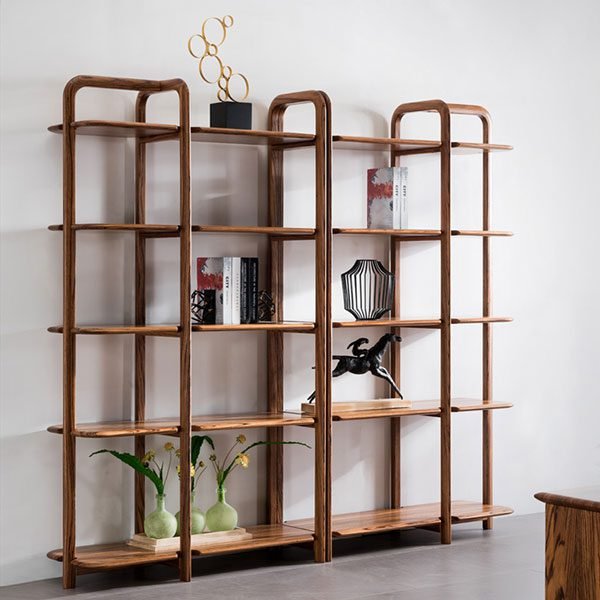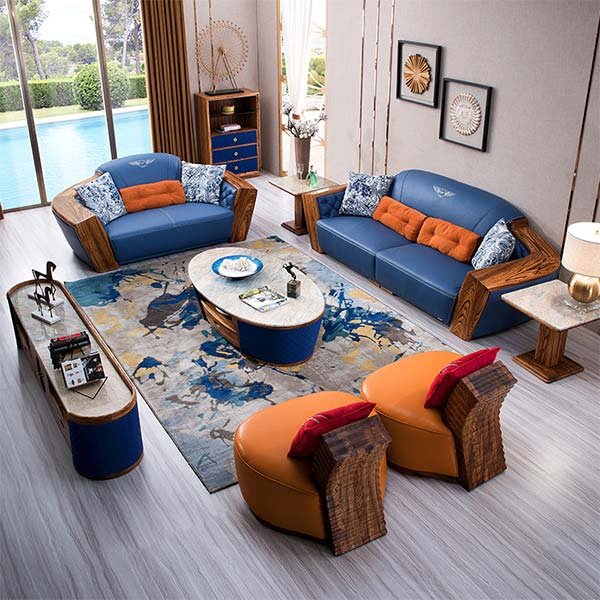“Embrace the Timeless Beauty: Wooden Furniture, an Enduring Elegance.”
The History and Evolution of Wooden Furniture
The history of wooden furniture dates back thousands of years, making it one of the oldest and most enduring forms of furniture. From ancient civilizations to modern times, wooden furniture has remained a staple in homes and establishments around the world. Its timeless beauty and enduring appeal can be attributed to its rich history and evolution.
Wooden furniture has been a part of human civilization since the earliest days of human existence. In ancient Egypt, wooden furniture was highly prized and often adorned with intricate carvings and decorations. The Egyptians believed that furniture was not just a functional item, but also a reflection of one’s status and wealth.
As civilizations advanced, so did the craftsmanship and design of wooden furniture. In ancient Greece, furniture became more refined and elegant, with a focus on symmetry and proportion. The Greeks also introduced the concept of comfort, with the addition of cushions and upholstery to their wooden chairs and sofas.
During the Middle Ages, wooden furniture took on a more ornate and decorative style. Intricate carvings and embellishments became popular, showcasing the skill and craftsmanship of the artisans. Furniture during this period was often made from oak, which was known for its durability and strength.
The Renaissance period saw a resurgence of interest in classical Greek and Roman designs. Wooden furniture became more refined and sophisticated, with a focus on balance and harmony. The use of exotic woods such as mahogany and walnut became popular, adding a touch of luxury to the furniture.
In the 18th and 19th centuries, wooden furniture underwent a significant transformation with the advent of industrialization. Mass production techniques allowed for the production of furniture on a larger scale, making it more accessible to the middle class. However, this also led to a decline in craftsmanship and the use of lower quality materials.
Despite the changes brought about by industrialization, wooden furniture continued to maintain its appeal. The natural beauty of wood, with its unique grain patterns and warm tones, has always been highly valued. Additionally, wooden furniture has a timeless quality that can adapt to different design styles and trends.
Today, wooden furniture continues to be a popular choice for homeowners and interior designers alike. Its versatility and durability make it suitable for a wide range of settings, from traditional to contemporary. Wooden furniture can add warmth and character to any space, creating a sense of comfort and elegance.
In conclusion, the history and evolution of wooden furniture have contributed to its enduring appeal. From ancient civilizations to modern times, wooden furniture has stood the test of time. Its timeless beauty, craftsmanship, and versatility make it a valuable addition to any home or establishment. Whether it’s a classic antique piece or a modern design, wooden furniture continues to captivate and inspire.
The Timeless Elegance of Handcrafted Wooden Furniture
The Timeless Beauty of Wooden Furniture: Insights into its Enduring Appeal
Wooden furniture has been a staple in homes for centuries, and its enduring appeal can be attributed to its timeless elegance. Handcrafted wooden furniture, in particular, exudes a sense of craftsmanship and artistry that is unmatched by mass-produced pieces. In this article, we will delve into the reasons behind the enduring appeal of handcrafted wooden furniture.
One of the main reasons why handcrafted wooden furniture continues to captivate homeowners is its unique and individualistic nature. Each piece is carefully crafted by skilled artisans, who pour their heart and soul into creating a work of art. This attention to detail and personal touch gives handcrafted wooden furniture a sense of character and authenticity that cannot be replicated by machines.
Moreover, handcrafted wooden furniture is often made from high-quality, solid wood. This not only ensures its durability but also adds to its timeless appeal. Unlike mass-produced furniture made from cheap materials, handcrafted wooden furniture can withstand the test of time and can be passed down through generations. Its ability to age gracefully and develop a rich patina only adds to its charm.
In addition to its durability, handcrafted wooden furniture offers a wide range of design options. Skilled artisans can create intricate carvings and unique designs that are tailored to the customer’s preferences. Whether it’s a classic, traditional design or a modern, contemporary piece, handcrafted wooden furniture can be customized to suit any style or taste.
Furthermore, handcrafted wooden furniture is often considered an investment. While it may come with a higher price tag compared to mass-produced furniture, its value increases over time. Antique handcrafted wooden furniture, in particular, can fetch a high price in the market due to its rarity and historical significance. Investing in handcrafted wooden furniture is not only a way to enhance the beauty of your home but also a way to preserve a piece of history.
Another aspect that contributes to the enduring appeal of handcrafted wooden furniture is its eco-friendliness. With the growing concern for the environment, many homeowners are opting for sustainable and eco-friendly options. Handcrafted wooden furniture fits the bill perfectly, as it is made from natural materials and does not contribute to deforestation or pollution. By choosing handcrafted wooden furniture, homeowners can make a conscious choice to support sustainable practices and reduce their carbon footprint.
In conclusion, the timeless elegance of handcrafted wooden furniture lies in its unique and individualistic nature, high-quality materials, customizable designs, investment value, and eco-friendliness. Its enduring appeal can be attributed to the craftsmanship and artistry that goes into creating each piece. Whether it’s a classic antique or a modern masterpiece, handcrafted wooden furniture adds a touch of sophistication and beauty to any home. So, if you’re looking to enhance the aesthetic appeal of your living space, consider investing in handcrafted wooden furniture that will stand the test of time.
Sustainable and Eco-Friendly Aspects of Wooden Furniture
Wooden furniture has been a staple in homes for centuries, and its enduring appeal can be attributed to a variety of factors. One of the key aspects that makes wooden furniture so popular is its sustainability and eco-friendliness.
In today’s world, where environmental concerns are at the forefront of many people’s minds, the use of sustainable materials is becoming increasingly important. Wooden furniture fits the bill perfectly, as it is made from a renewable resource – trees. Unlike other materials such as plastic or metal, which require extensive mining or manufacturing processes, wood can be harvested from responsibly managed forests.
The process of harvesting wood for furniture production can be done in an environmentally friendly manner. Sustainable forestry practices ensure that trees are replanted after they are cut down, allowing for the continuous growth and regeneration of forests. This not only helps to maintain the natural habitat for wildlife but also contributes to the reduction of carbon dioxide in the atmosphere, as trees absorb this greenhouse gas during their growth.
Furthermore, wooden furniture has a long lifespan, which adds to its eco-friendliness. Unlike many other materials that deteriorate over time and need to be replaced, well-crafted wooden furniture can last for generations. This not only reduces the demand for new furniture production but also minimizes the amount of waste that ends up in landfills.
Another eco-friendly aspect of wooden furniture is its ability to be recycled and repurposed. When wooden furniture reaches the end of its life, it can be easily transformed into other useful items or used as fuel for energy production. This reduces the need for new raw materials and helps to conserve natural resources.
In addition to its sustainability, wooden furniture also offers a unique aesthetic appeal. The natural beauty of wood, with its unique grain patterns and warm tones, adds a touch of elegance and warmth to any space. Whether it’s a rustic farmhouse table or a sleek modern chair, wooden furniture has a timeless quality that transcends trends and fads.
Wooden furniture also has a versatility that allows it to fit into any style of interior design. It can be stained or painted to match any color scheme, and its natural texture adds depth and character to a room. From traditional to contemporary, wooden furniture seamlessly blends with any décor, making it a versatile choice for homeowners and interior designers alike.
In conclusion, the enduring appeal of wooden furniture can be attributed to its sustainability and eco-friendliness. The use of renewable resources, responsible forestry practices, and the ability to recycle and repurpose wood make it an environmentally conscious choice. Additionally, the natural beauty and versatility of wooden furniture make it a timeless addition to any home. So, whether you’re looking to furnish a new space or update your existing décor, consider the timeless beauty of wooden furniture and its sustainable qualities.
Заключение
Заключение: Деревянная мебель обладает вечной привлекательностью благодаря своей неповторимой красоте и элегантности. Ее прочность, естественность и уникальность делают ее популярным выбором для декорирования интерьера. Время не оказывает отрицательного влияния на деревянную мебель, а, наоборот, придает ей особый шарм и характер. Благодаря своей долговечности и способности сочетаться с различными стилями и дизайнами, деревянная мебель остается востребованной и актуальной на протяжении многих лет.



